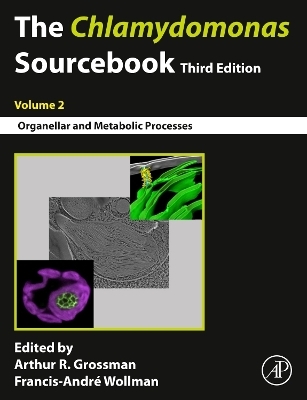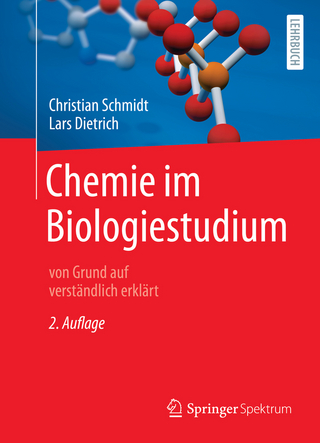
The Chlamydomonas Sourcebook
Academic Press Inc (Verlag)
978-0-12-821430-5 (ISBN)
This book thus presents the latest advances in both the research and uses of new experimental approaches and technologies, making this a must-have resource for researchers and students working in plant science and photosynthesis, fertility, mammalian vision, aspects of human disease, acclimation to environmental change, and the biogenesis of cellular complexes.
Arthur R. Grossman has been a staff scientist at the Carnegie Institution for Science since 1982 and is a courtesy professor at Stanford University. He received both the Gilbert Morgan Smith Medal (2009) from the National Academy of Sciences and the Darbaker Prize (2002) from the Botanical Society of America for his work on microalga. In an NSF-supported project and collaborations with the Joint Genome Institute of the Department of Energy (DOE), he spearheaded the initial Chlamydomonas genome project that led to the complete Chlamydomonas genome sequence, its initial annotation, and the use of the information to promote genome-wide transcriptome analyses; Chlamydomonas remains a powerful molecular-genomic model system and a flagship alga of the DOE. Grossman’s focus is on how photosynthetic organisms perceive and respond to their environment, with an emphasis on light and nutrient conditions. Francis-André Wollman is an emeritus research director at the Centre National de la Recherche Scientifique (CNRS), a member of the French Academy of Sciences, a member of EMBO, and has received the Silver Medal from the CNRS. In the mid-1970s, he joined the photosynthesis laboratory of Pierre Joliot at the Institut de Biologie Physico-Chimique (IBPC) in Paris and in the late 1990s, he became the director of this laboratory before being appointed director of IBPC in 2007. His research has focused on the biogenesis, regulation, and evolution of oxygenic photosynthesis. Throughout his career, he has used the genetics of Chlamydomonas reinhardtii for biophysical, biochemical, and structural studies to provide a dynamic view of photosynthesis as being highly responsive to an ever-changing environment through its bioenergetic integration and metabolic flexibility.
1. The Comparative, Biochemistry, Genetics and Evolution of Starch Metabolism in Chlamydomonas reinhardtii 2. Chlamydomonas Glycerolipid Metabolism 3. Nitrogen Metabolism in Chlamydomonas 4. Phosphorus and Sulfur Uptake, Assimilation, and Deprivation Responses 5. Trace metal nutrition and response to deficiency 6. Sensory photoreceptors in Chlamydomonas 7. RubisCo and Carbon assimilation 8. Photoproduction of reducing power and the Calvin-Benson Cycle 9. Metabolic Networks during Dark Anoxia 10. Hydrogenases and hydrogen production 11. The mitochondrion: from genome to proteome 12. The chloroplast in a changing environment: from genome to proteome 13. Control of organellar gene expression by nucleus-encoded proteins 14. Translation and Protein Synthesis in the chloroplast 15. Photosynthesis: Light Harvesting 16. Photosystem I and II 17. Chloroplast ATP synthase and the cytochrome b6f complex 18. The multiple routes of photosynthetic electron transfer in Chlamydomonas reinhardtii 19. Assembly of Photosynthetic proteins 20. Molecular chaperones and proteases 21. Tetrapyrrole biosynthesis and signaling (chlorophyll heme and bilins) 22. Carotenoids in Chlamydomonas 23. Supramolecular organization of chloroplast membranes 24. State transitions 25. Photoprotection
| Erscheinungsdatum | 27.02.2023 |
|---|---|
| Zusatzinfo | 800 illustrations (600 in full color); Illustrations |
| Verlagsort | San Diego |
| Sprache | englisch |
| Maße | 216 x 276 mm |
| Gewicht | 2510 g |
| Themenwelt | Naturwissenschaften ► Biologie ► Biochemie |
| Naturwissenschaften ► Biologie ► Botanik | |
| Naturwissenschaften ► Physik / Astronomie ► Angewandte Physik | |
| ISBN-10 | 0-12-821430-9 / 0128214309 |
| ISBN-13 | 978-0-12-821430-5 / 9780128214305 |
| Zustand | Neuware |
| Informationen gemäß Produktsicherheitsverordnung (GPSR) | |
| Haben Sie eine Frage zum Produkt? |
aus dem Bereich


